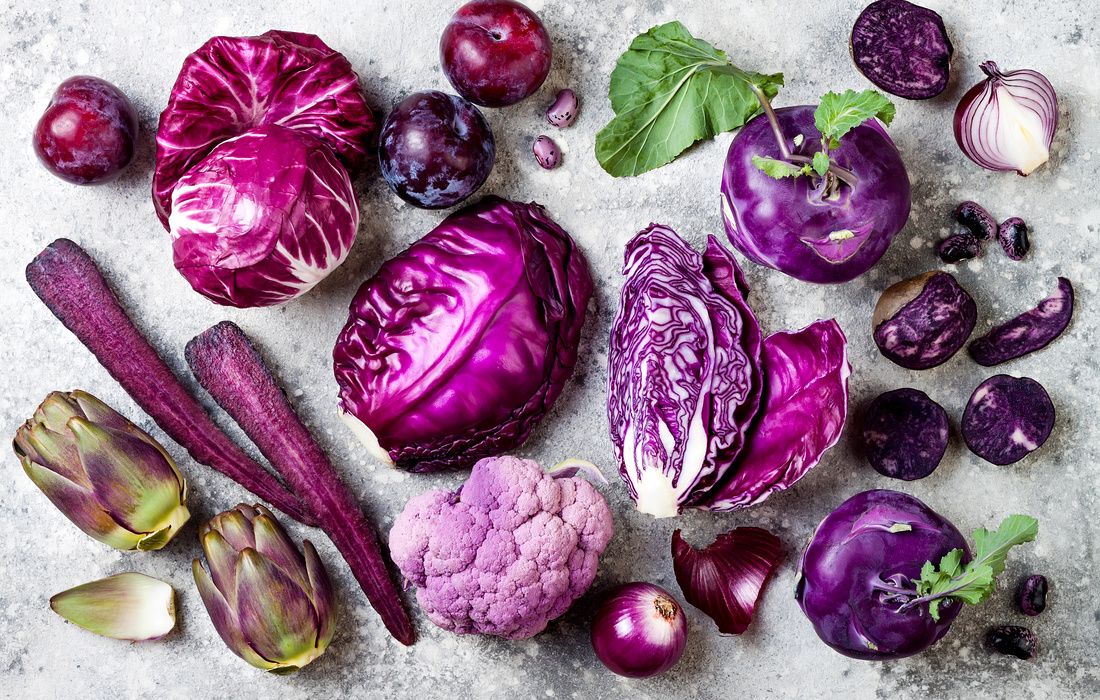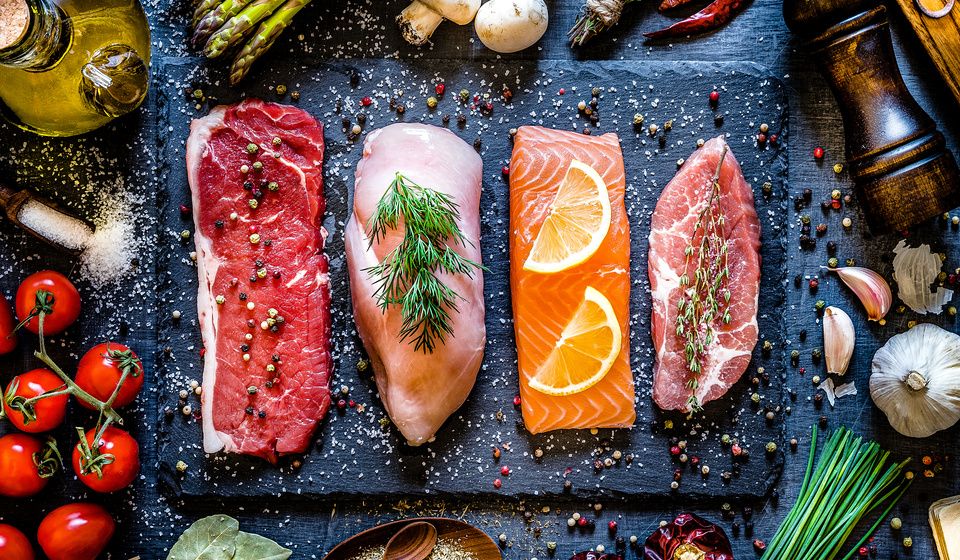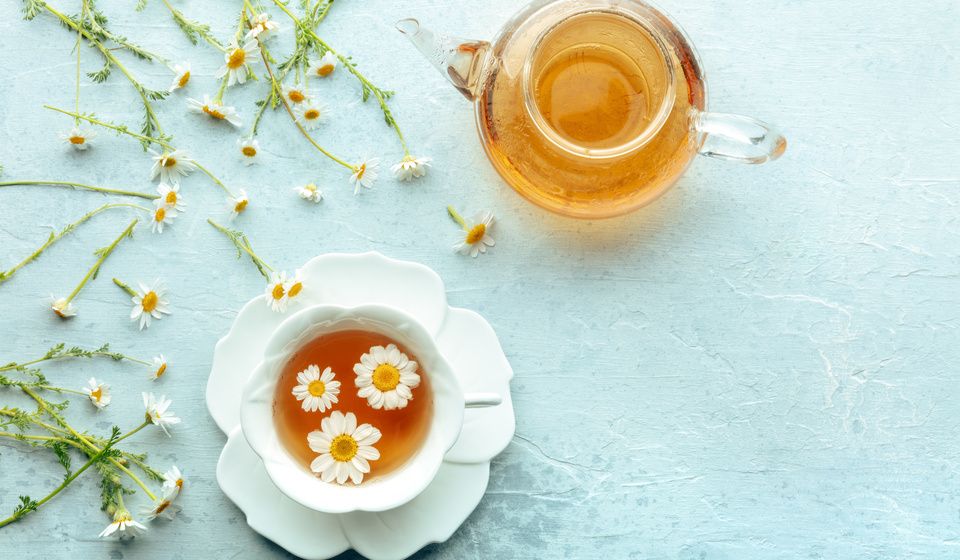How do Certain Foods Unlock Longevity Pathways in the Body?
Ali Segersten Feb 09, 2025 1 comment
Food is powerful medicine for anti-aging and disease prevention because it directly influences cellular pathways that regulate health and longevity. Nutrient-dense foods provide bioactive compounds that reduce oxidative stress, inflammation, and metabolic dysfunction—key drivers of aging. Polyphenols and omega-3s activate sirtuins and AMPK, enhancing cellular repair and autophagy. Phytonutrients also combat DNA damage and epigenetic aging, helping to extend both lifespan and healthspan while reducing the risk of chronic disease.
Here are some of the most well-studied compounds:
Certain bioactive compounds in foods can activate longevity-associated pathways in DNA, including sirtuins and AMP-activated protein kinase (AMPK), which play crucial roles in cellular metabolism, stress resistance, and aging. Polyphenols like resveratrol, found in red grapes and berries, have been shown to activate sirtuins, particularly SIRT1, mimicking calorie restriction and promoting longevity.
Similarly, compounds such as curcumin, quercetin, and epigallocatechin gallate (EGCG) can enhance AMPK activation, improving mitochondrial function and metabolic health. Additionally, recent human trials show that nicotinamide riboside supplementation effectively increases NAD+ levels, supporting sirtuin activity. These findings suggest that dietary interventions rich in these compounds may promote healthy aging and longevity.
Which nutrient-dense foods can you add to your diet today? Remember, nourishing ourselves is a practice of continually consuming more whole, nutrient-dense foods. Our membership portal offers access to over 1800 nutrient-dense recipes for every diet, so you can take charge of your health.
1. Resveratrol
- Found in: Red wine, grapes, blueberries, cranberries, peanuts
- How it works: Activates SIRT1, enhancing mitochondrial function and stress resistance.
2. Quercetin
- Found in: Apples, onions, capers, kale, berries, plums, artichokes
- How it works: Activates AMPK, increases autophagy, and protects against cellular aging.
3. Fisetin
- Found in: Strawberries, apples, persimmons, grapes
- How it works: Activates SIRT1 and promotes senescent cell clearance (anti-aging effects).
4. Curcumin
- Found in: Turmeric
- How it works: Activates SIRT1, AMPK, and reduces inflammation through antioxidant pathways.
5. EGCG (Epigallocatechin gallate)
- Found in: Green tea, matcha
- How it works: Activates AMPK and SIRT1, improving metabolic health and cellular repair.
6. Nicotinamide Riboside (NR) & Nicotinamide Mononucleotide (NMN)
- Found in: Milk, broccoli, avocado, cucumbers, shiitake mushrooms, beef
- How it works: Precursors to NAD+, essential for sirtuin activation and mitochondrial function.
7. Berberine
- Found in: Goldenseal, Oregon grape
- How it works: Activates AMPK, mimicking the effects of calorie restriction and improving insulin sensitivity.
8. Pterostilbene
- Found in: Blueberries, grapes, peanuts
- How it works: More bioavailable than resveratrol; activates SIRT1 and enhances antioxidant defenses.
9. Oleuropein
- Found in: Olive oil, olives
- How it works: Activates SIRT1 and AMPK, reduces oxidative stress, and promotes cardiovascular health.
10. Sulforaphane
- Found in: Broccoli sprouts, Brussels sprouts, broccoli, cauliflower, cabbage, arugula, radishes, kohlrabi
- How it works: Indirectly supports sirtuins by reducing oxidative stress and inflammation.
Pairing these compounds with fasting, exercise, and a low-sugar, high-fiber diet further enhances sirtuin and AMPK activity, promoting longevity. If you'd like support in finding delicious, nutrient-dense recipes using these ingredients, consider a Nourishing Meals® membership! Plug in specific ingredients into our custom search page to find recipes using these superfoods.
A membership gives you access to over 1800 nutrient-dense recipes and meal planning tools to help you stay on track with health goals and eat in the most delicious and nutrient-dense way possible!
References:
-
Aleksandrova, K., Koelman, L., & Rodrigues, C. E. (2021). Dietary patterns and biomarkers of oxidative stress and inflammation: A systematic review of observational and intervention studies. Redox Biology, 42, 101869. https://doi.org/10.1016/j.redox.2021.101869
-
Bednarczyk, M., Dąbrowska-Szeja, N., Łętowski, D., Dzięgielewska-Gęsiak, S., Waniczek, D., & Muc-Wierzgoń, M. (2024). Relationship between dietary nutrient intake and autophagy-related genes in obese humans: A narrative review. Nutrients, 16(23), 4003. https://doi.org/10.3390/nu16234003
-
Dellinger, R. W., Santos, S. R., Morris, M., Evans, M., Alminana, D., Guarente, L., & Marcotulli, E. (2017). Repeat dose NRPT (nicotinamide riboside and pterostilbene) increases NAD+ levels in humans safely and sustainably: A randomized, double-blind, placebo-controlled study. NPJ Aging and Mechanisms of Disease, 3, 17. https://doi.org/10.1038/s41514-017-0016-9
-
Fitzgerald, K. N., Hodges, R., Hanes, D., Stack, E., Cheishvili, D., Szyf, M., Giannopoulou, D., & Hodges, R. (2021). Potential reversal of epigenetic age using a diet and lifestyle intervention: A pilot randomized clinical trial. Aging, 13(7), 9419–9432. https://doi.org/10.18632/aging.202913
-
Gonçalinho, G. H. F., Roggerio, A., Goes, M. F. d. S., Avakian, S. D., Leal, D. P., Strunz, C. M. C., & Mansur, A. d. P. (2023). Sirtuin 1 and vascular function in healthy women and men: A randomized clinical trial comparing the effects of energy restriction and resveratrol. Nutrients, 15(13), 2949. https://doi.org/10.3390/nu15132949
-
Hardie, D. G., Ross, F. A., & Hawley, S. A. (2012). "AMPK: a nutrient and energy sensor that maintains energy homeostasis." Nature Reviews Molecular Cell Biology, 13(4), 251–262. https://doi.org/10.1038/nrm3311
-
Madeo, F., Zimmermann, A., Maiuri, M. C., & Kroemer, G. (2018). "Essential role for autophagy in life span extension." The Journal of Clinical Investigation, 128(1), 85–93. https://doi.org/10.1172/JCI97943
-
Trammell, S. A. J., Schmidt, M. S., Weidemann, B. J., Redpath, P., Jaksch, F., Dellinger, R. W., Li, Z., Abel, E. D., Migaud, M. E., & Brenner, C. (2016). Nicotinamide riboside is uniquely and orally bioavailable in mice and humans. Nature Communications, 7, 12948. https://doi.org/10.1038/ncomms12948

About the Author
Alissa Segersten, MS, CN
Alissa Segersten, MS, CN, is the founder of Nourishing Meals®, an online meal-planning membership with over 1,800 nourishing recipes and tools to support dietary change and better health. As a functional nutritionist, professional recipe developer, and author of The Whole Life Nutrition Cookbook, Nourishing Meals, and co-author of The Elimination Diet, she helps people overcome health challenges through food. A mother of five, Alissa understands the importance of creating nutrient-dense meals for the whole family. Rooted in science and deep nourishment, her work makes healthy eating accessible, empowering thousands to transform their well-being through food.Nourishing Meals Newsletter
Email updates.






Add Comment
Comments
I just love your work. You…
I just love your work. You’re so skilled and talented. Thanks for everything you do to make this world a healthier place.